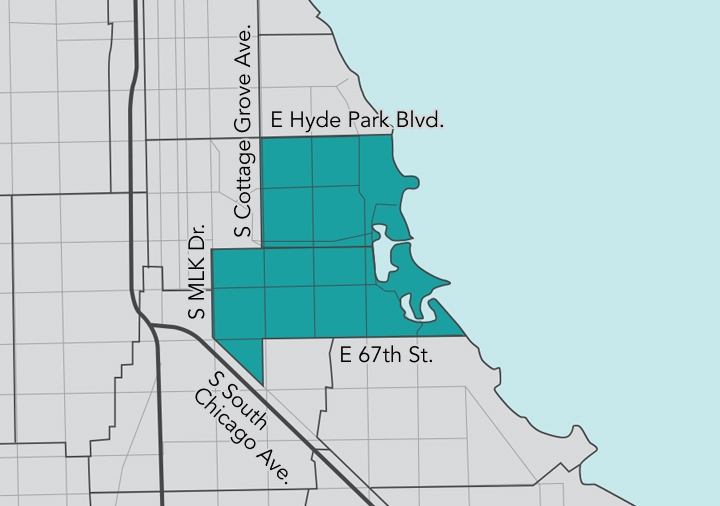
Hyde Park / Woodlawn
Founded in the early 1850s, the culturally rich and diverse neighborhood of Hyde Park is home to activists, artists, politicians, students and scholars. From innovative Modernist landmarks to bucolic green spaces, Hyde Park is studded with remarkable architecture. In 1853, Hyde Park Township was established as a modest commuter suburb with frequent train service to downtown. The location was enviable, just miles from the Loop, and encompassing two of the city’s largest parks: Jackson and Washington.
The 1893 World’s Fair and the establishment of the University of Chicago triggered a wave of development. Fearful of large-scale housing demolition in the 1960s, community groups worked to stabilize the area and preserve Hyde Park's identity as a vibrant and unique neighborhood. Today, Hyde Park is undergoing rapid change linked to significant new commercial development.
Woodlawn developed rapidly in the 1890s as the gateway to the 1893 World’s Fair. The elevated train along 63rd Street helped spur its development into a commercial and jazz mecca. As African Americans began to migrate north to Chicago during the 1920s, many faced housing discrimination and hostility. The neighborhood became the center of a pivotal Supreme Court Case Hansberry v. Lee and echo experiences set in Lorraine Hansberry's famous play, “A Raisin in the Sun.” By the early 1960s, Woodlawn was a predominantly African American neighborhood and considered part of the “Black Metropolis.”
Although the neighborhood has faced considerable disinvestment, Woodlawn is seeing renewed interest. The Obama Presidential Center nearing completion in Jackson Park promises to bring economic development but has also prompted concerns about displacement of longtime residents.

